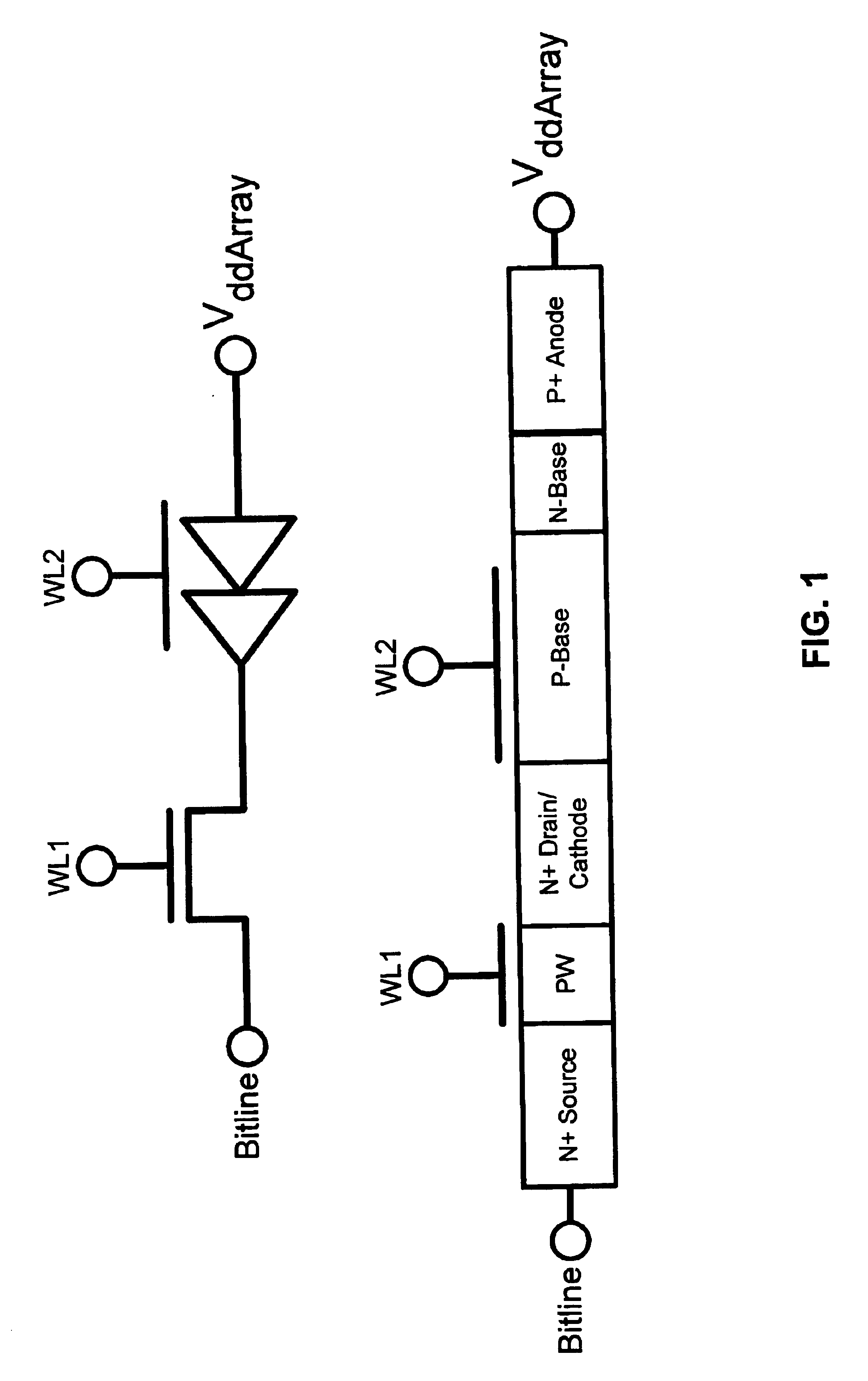Charge pump based voltage regulator with smart power regulation
a voltage regulator and charging pump technology, applied in the field of voltage regulators, can solve the problems of limiting the speed of operation of a thyristor-based sram, wasting time, and wasting resources,
- Summary
- Abstract
- Description
- Claims
- Application Information
AI Technical Summary
Problems solved by technology
Method used
Image
Examples
Embodiment Construction
Charge pumps (CPs) are commonly used inside an IC to generate either a negative voltage or a positive voltage larger than the external supply voltage powering-up the IC. CPs of various types (NMOSFET or PMOSFET-based, with or without bootstrapping) have been developed since the early days of silicon-based MOS technologies. They were also implemented in bipolar technologies. CPs are notorious for three undesirable deficiencies. First and foremost they are very inefficient in terms of circuit area and overall power dissipation. They require a large amount of capacitor which occupies a large area on an IC (relatively to other circuit blocks and functions on the IC). Their inefficiency is further worsened by their sensitivity to leakage currents and the effect of circuit parasitic capacitances. CP power efficiency is very low, often less than 10% and seldom above 25%. The efficiency tends to decrease as the CP output current loading requirements and the magnitude of the output voltage a...
PUM
 Login to View More
Login to View More Abstract
Description
Claims
Application Information
 Login to View More
Login to View More - R&D
- Intellectual Property
- Life Sciences
- Materials
- Tech Scout
- Unparalleled Data Quality
- Higher Quality Content
- 60% Fewer Hallucinations
Browse by: Latest US Patents, China's latest patents, Technical Efficacy Thesaurus, Application Domain, Technology Topic, Popular Technical Reports.
© 2025 PatSnap. All rights reserved.Legal|Privacy policy|Modern Slavery Act Transparency Statement|Sitemap|About US| Contact US: help@patsnap.com



